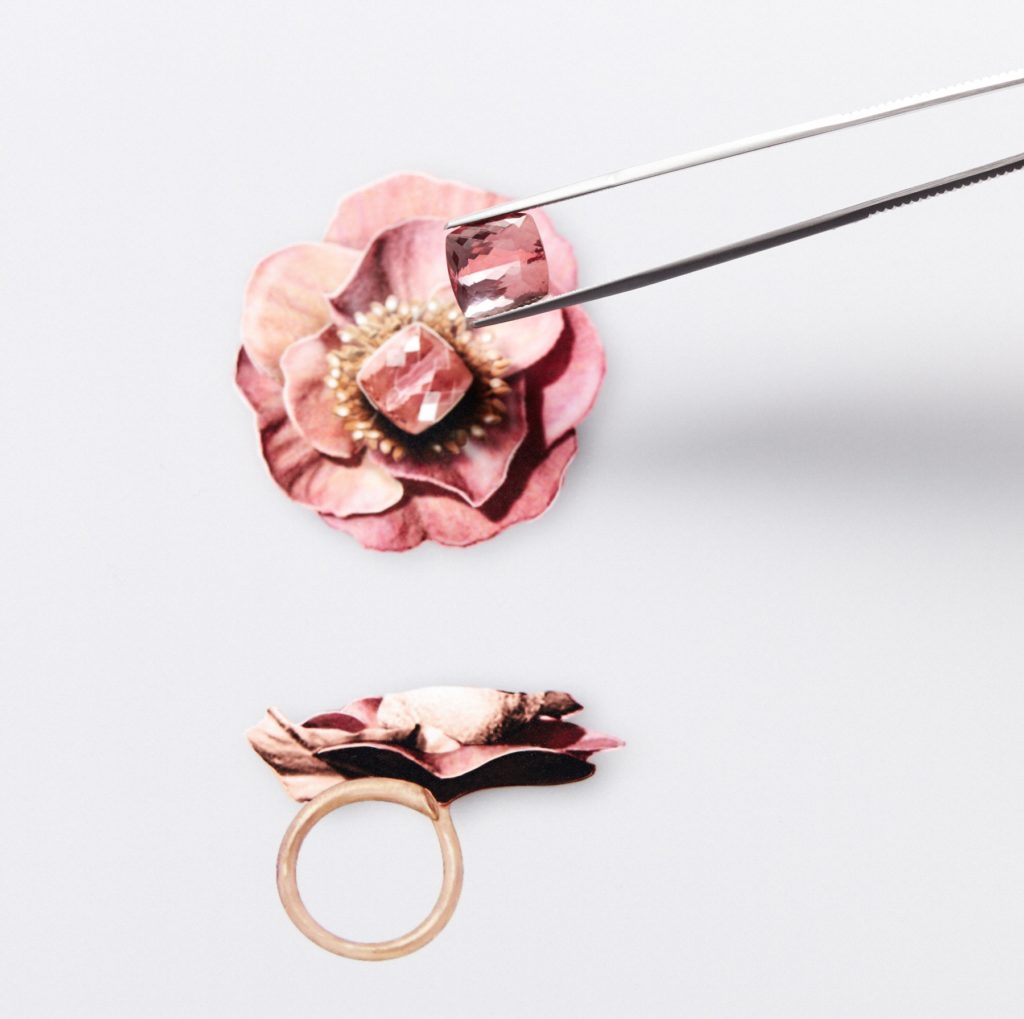To celebrate its 160th anniversary this year, the house of Boucheron, a family enterprise founded in 1858 and owned today by the Kering luxury group, set out to transcend all of the limits of high jewelry-making. Turning to innovation, the Place Vendôme jeweler designed a collection that combines creativity with two rare elements—scanners and science—in order to surpass nature itself.
Titled “Nature Triomphante,” Boucheron’s new high jewelry collection was shown for three days at the beginning of July. The presentation centered around a giant reconstructed Vendôme column placed inside the showrooms of 7 Place Vendôme, a temporary venue for the maison until its historic boutique on the opposite end of the famed Parisian square reopens this autumn.

Flower Ring from the Alchimiste Collection. Image courtesy of Boucheron.
The 80-piece collection was presented in three chapters—Naturaliste, Surréaliste, and Alchimiste—that reinterpret some of the signature highlights of the maison. A complete run-through of the collection also confirmed the rich savoir-faire of the jeweler and its long-standing tradition of technical innovation.
This year, Boucheron has taken its know-how to the cutting edge of science, with nine pieces de resistance: flower-shaped rings that take petals of real flowers and immortalize them into eternal pieces of jewelry.
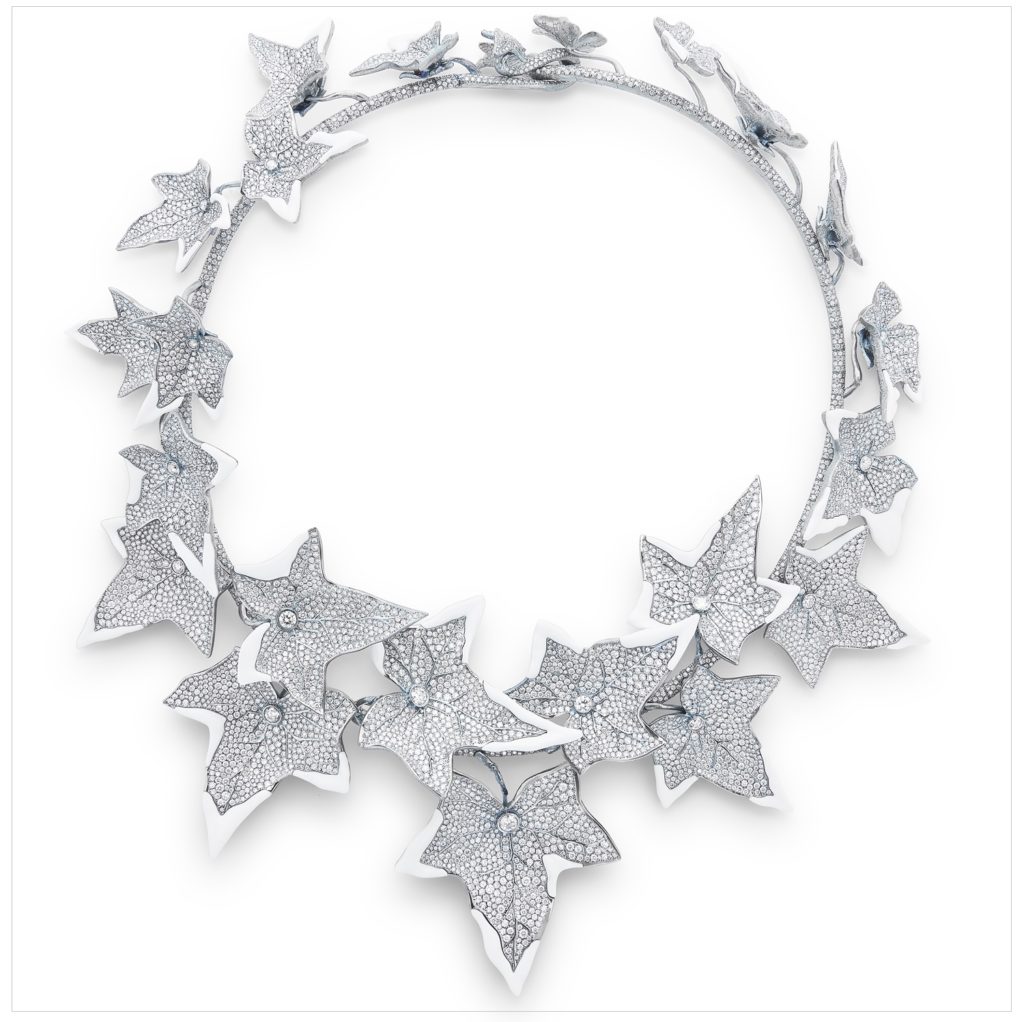
The Lierre Givrée Necklace, from the Naturaliste Collection. Image courtesy of Boucheron.
“Frédéric Boucheron, our founder, was a visionary whose creations liberated women by innovating in part by making highly wearable jewelry,” a representative for Boucheron told artnet News in a private presentation. Case in point, a stunning piece called the Lierre Givrée is shaped like a branch of ivy and made from a real ivy branch scanned and reproduced using a 3-D printer. The one-of-a-kind piece was then made with titanium and paved with 14,500 diamonds and porcelain-white Cacholong opals placed on the tip of each delicately jeweled leaf. The piece, as lightweight as real ivy, can be worn as a necklace or a head ornament. It also boasts the most pavé diamonds of any piece in Boucheron’s history, according to the maison.
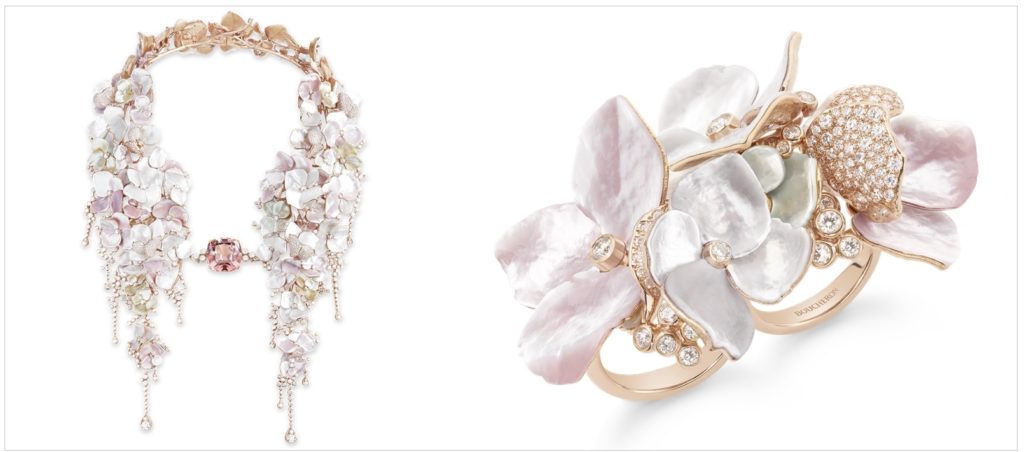
True to the free-spirited ethos of Boucheron, the Fleur Graphique, another transformable necklace offering multiple wear options, features a 5.65-carat Colombian cushion-cut emerald set in the heart of a mother of pearl and black lacquer “chevron” pattern base. Its floral design is derived from a scanned flower reinterpreted in an Art Deco style. A scanner was also used to reproduce the delicate curves of the hydrangea blossoms as close to nature as possible on the Nuage de Fleur necklace.
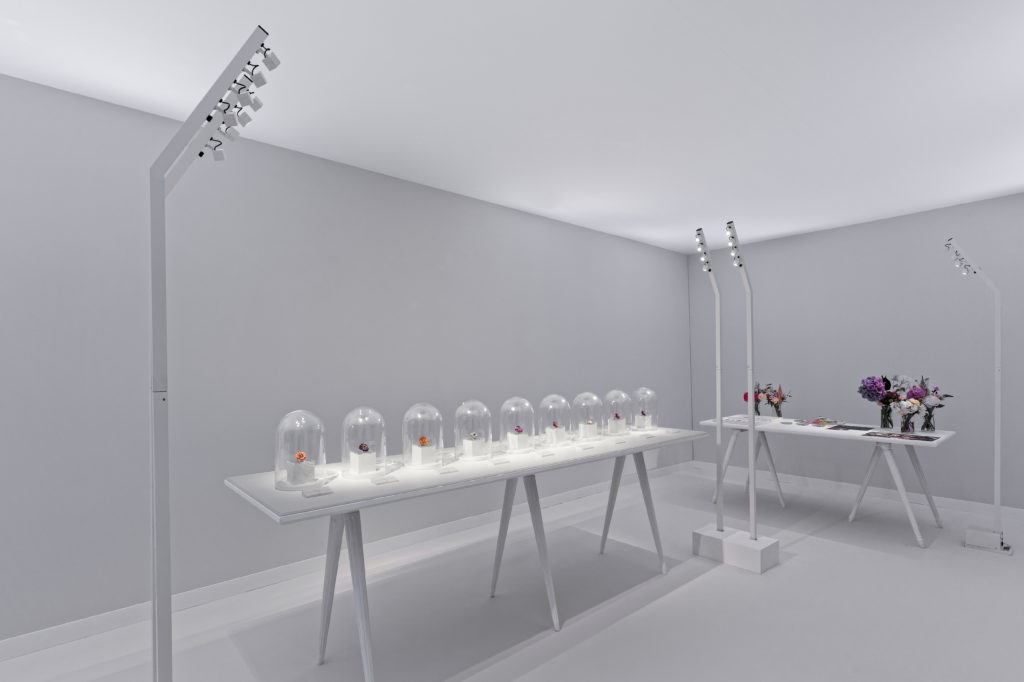
Image courtesy of Boucheron.
The grand surprise of the collection wasn’t revealed until the last room, in the form of rings that feature actual petals of roses, hydrangeas, poppies, and anemones.
Using a medical scanner, the components of each flower—its petals, pistils, and stamen—were scanned to obtain a precise image of nature’s product with exact proportions. The petals were delicately removed and stabilized using a chemical-free technique devised by the French environmental artist and “petalist” Claire Boucl, whose methods are a closely guarded trade secret. A layer of varnish and ultra-thin protective metal was then applied to the petals to protect them from humidity, water, or heat. The treated petals were then combined with precious stones for the pistil and precious metal for the stamen. The stunning results represent a new chapter in the history of naturalistic jewelry.
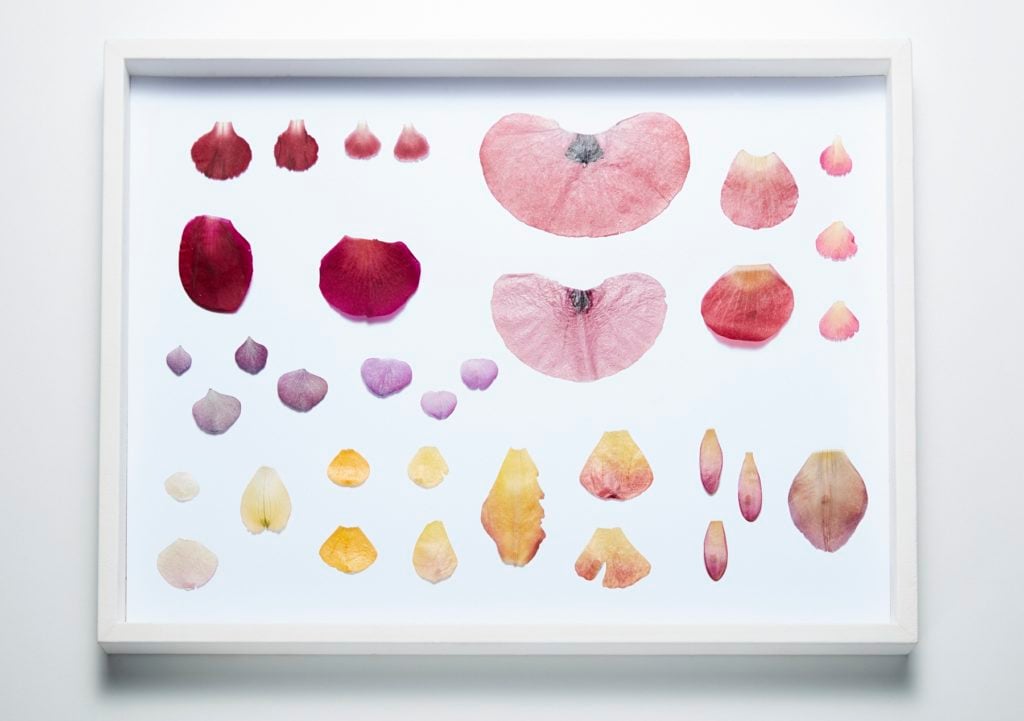
Nature Triomphante 2018 Collection, Natural petals color chart. Image courtesy of Boucheron.
“The idea was to produce an exact replica of the flowers with all their natural defects and without any interpretation or improvement by the hand of man,” explained Claire Choisne, Boucheron’s creative director.
Boucheron has taken the ephemeral beauty of a fragile live petal and transformed it into an everlasting piece of jewelry. Its spectacular flower rings, with prices starting at €100,000 ($117,300), are undoubtedly the closest that high jewelry has ever come to duplicating nature.
